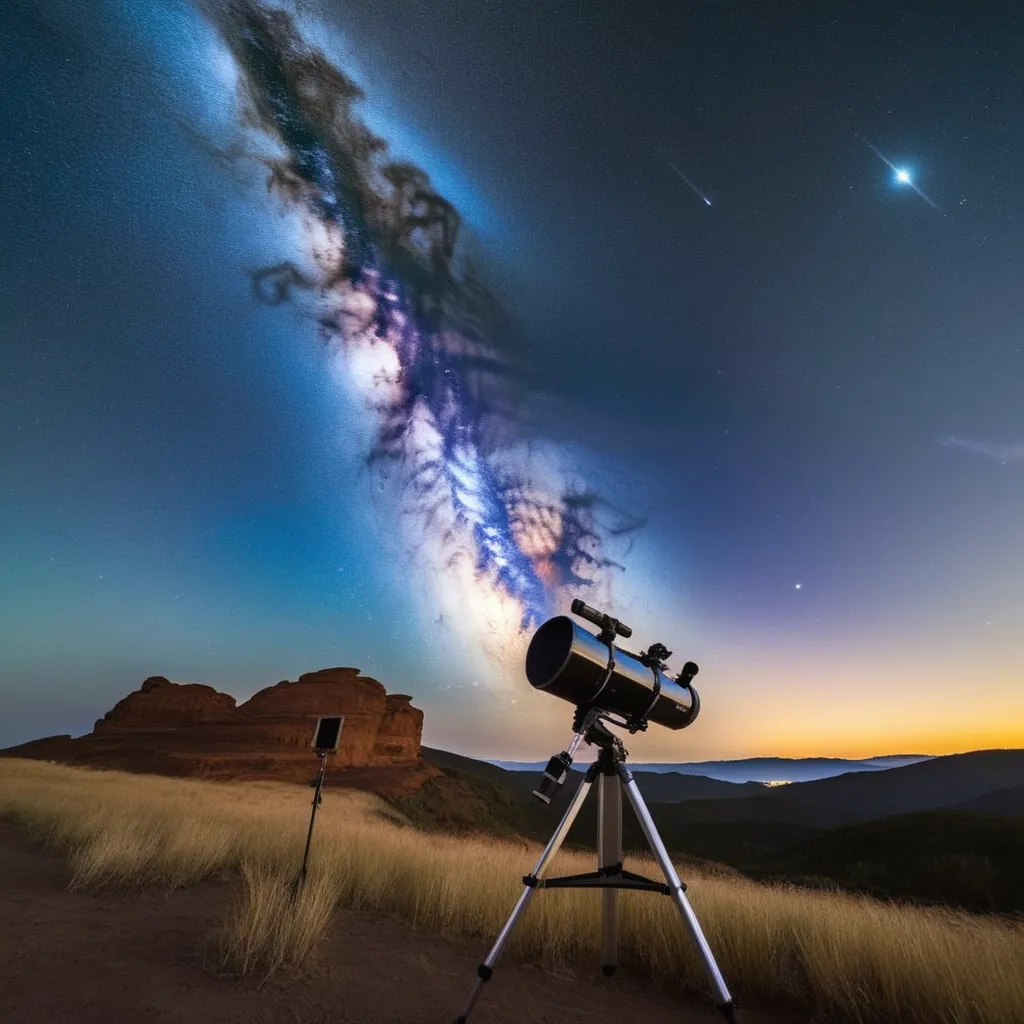The Intriguing World of Amateur Astronomy
Step outside on a clear night, look up, and you'll find yourself in the theater of the cosmos. Amateur astronomy, a pursuit fueled by curiosity and wonder, invites us to become celestial explorers from the comfort of our own backyard. Join me as we navigate the night sky, exploring the fascinating realm of amateur astronomy.

Stargazing Beginnings
Anecdote: My First Encounter with Orion
My journey into amateur astronomy started with a simple stargazing evening. The constellation Orion, with its distinctive belt of three stars, captured my attention. Armed with a basic telescope, I marveled at the details of Orion's nebula and realized the universe was more accessible than I'd imagined.
Getting Started in Stargazing
- Star Maps and Apps: Begin with star maps or mobile apps to identify constellations and major celestial bodies.
- Binoculars and Telescopes: Invest in binoculars or a telescope to enhance your view and explore deeper into space.
- Dark Sky Locations: Escape city lights for optimal stargazing; dark sky locations offer clearer views of celestial wonders.
Exploring the Moon's Mysteries
Anecdote: Lunar Discoveries in My Backyard
The moon, Earth's constant companion, is a captivating celestial body for amateur astronomers. My backyard explorations revealed the moon's craters, mountains, and lunar seas. It became a monthly ritual to observe the changing phases, each unveiling new details of our closest cosmic neighbor.
Lunar Observations Tips
- Moon Phases Calendar: Track moon phases to plan observations; each phase offers a unique perspective.
- Moon Maps: Explore moon maps to identify prominent features like craters and maria.
- Lunar Photography: Capture the moon's beauty with a smartphone or camera; it's a rewarding way to document your observations.
Chasing Planets Across the Sky
Anecdote: Spotting Jupiter's Moons
Spotting Jupiter, the giant of our solar system, was a game-changer in my astronomical pursuits. Witnessing its four largest moons, known as the Galilean moons, orbiting in real-time through a telescope was a celestial spectacle. Planetary observation adds a dynamic element to amateur astronomy.
Planetary Observation Tips
- Planetary Alignment Alerts: Use apps to receive alerts about planetary alignments for optimal viewing.
- Telescope Filters: Experiment with filters to enhance details on planets, revealing atmospheric bands and features.
- Observing Transits: Witness planetary transits, like the passage of Venus across the sun, for rare and memorable events.
Chasing Nebulas and Deep-Sky Objects
Anecdote: Nebula Hunting Adventures
Venturing beyond our solar system, amateur astronomers explore nebulae—vast clouds of gas and dust. One of my most thrilling experiences was capturing the ethereal glow of the Orion Nebula. Deep-sky objects, including galaxies and star clusters, unveil the grandeur of our cosmic neighborhood.
Deep-Sky Exploration Tips
- Dark Adaptation: Allow your eyes to adapt to darkness for better visibility of faint deep-sky objects.
- Astrophotography: Experiment with astrophotography to capture the intricate details of nebulae and galaxies.
- Star Parties: Join local astronomy clubs or star parties to share equipment and expertise for deep-sky observations.
Meteor Showers and Celestial Events
Anecdote: Meteor Shower Magic
Meteor showers are nature's light shows, and catching a shower unexpectedly can be a magical experience. During one shower, I found a comfortable spot, lay back, and marveled at the celestial fireworks. Meteor showers and other celestial events add an element of surprise to the amateur astronomer's calendar.
Event Watching Tips
- Event Calendars: Stay informed about upcoming events, including meteor showers, eclipses, and transits.
- Dark Sky Trips: Plan trips to dark sky locations for optimal visibility during major celestial events.
- Meteor Shower Rituals: Bring a cozy blanket, snacks, and maybe some company for a memorable meteor shower viewing experience.
Connecting with the Amateur Astronomy Community
Anecdote: Shared Discoveries at a Star Party
Amateur astronomy is not a solitary pursuit; it's a community of enthusiasts eager to share knowledge and discoveries. Attending a star party, I connected with fellow stargazers, exchanged tips, and got a chance to explore different telescopes. The sense of camaraderie enhances the joy of amateur astronomy.
Community Engagement Tips
- Astronomy Clubs: Join local or online astronomy clubs to connect with like-minded individuals.
- Workshops and Events: Attend workshops, lectures, and star parties to learn from experienced astronomers.
- Collaborative Projects: Participate in citizen science projects, contributing to real astronomical research.
Conclusion: A Cosmic journey of Discovery

Amateur astronomy isn't just about observing celestial bodies; it's a journey of discovery, curiosity, and connection. Whether you're exploring the moon's mysteries, chasing planets, hunting deep-sky objects, or simply gazing at meteor showers, the universe becomes a personal playground. So, grab your telescope, find a cozy spot, and join the ranks of amateur astronomers discovering the wonders of the cosmos—one stargazing adventure at a time.







